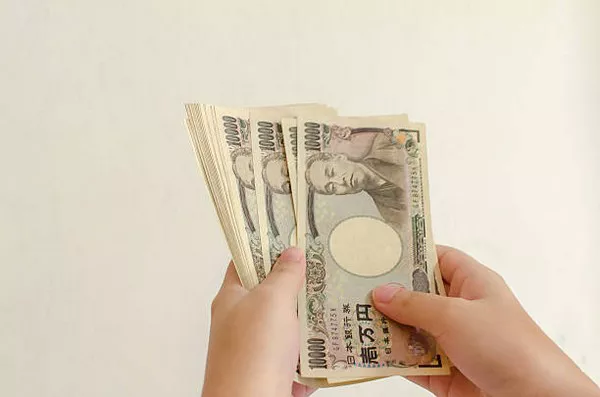The Japanese yen has long maintained a reputation as one of the world’s weaker currencies compared to major counterparts like the US dollar, euro, and British pound. Despite being the third most traded currency globally, its value often perplexes observers and investors alike. In this article, we delve into the multifaceted factors that contribute to the yen’s relatively low valuation on the global stage, exploring economic, historical, and structural elements that shape its standing in the foreign exchange markets.
Understanding Exchange Rates and Currency Valuation:
Before dissecting the reasons behind the yen’s cheapness, it’s crucial to grasp the fundamentals of exchange rates and currency valuation. Exchange rates represent the relative value of one currency against another and are determined by various factors, including interest rates, inflation differentials, economic performance, geopolitical events, and market sentiment. A currency’s strength or weakness is typically measured against a basket of other currencies, providing a holistic view of its standing in the global economy.
Why Is the Yen So Cheap?
1. Historical Context:
Japan’s economic history plays a pivotal role in understanding the yen’s value. Following World War II, Japan experienced rapid industrialization and economic growth, emerging as a global manufacturing powerhouse. However, the 1990s marked the onset of Japan’s economic stagnation, commonly referred to as the “Lost Decade,” characterized by asset price bubbles, deflationary pressures, and sluggish growth. In response, the Japanese government implemented expansionary monetary policies and embarked on unprecedented quantitative easing programs to stimulate economic activity and combat deflation. These measures, while aiming to spur growth, also exerted downward pressure on the yen’s value, contributing to its relative cheapness.
2. Trade Dynamics:
Japan boasts a robust export-oriented economy, with exports accounting for a significant portion of its GDP. The yen’s cheapness plays a crucial role in bolstering the competitiveness of Japanese exports in global markets. A weaker yen makes Japanese goods more affordable for foreign buyers, stimulating demand and driving export-led growth. Consequently, policymakers often adopt measures to maintain a competitive exchange rate, intervening in currency markets to prevent excessive appreciation that could erode export competitiveness. The yen’s cheapness, therefore, serves as a strategic advantage for Japan’s export-driven economy.
3. Monetary Policy:
The Bank of Japan (BOJ) wields substantial influence over the yen’s value through its monetary policy decisions. In response to economic challenges such as deflation and sluggish growth, the BOJ has implemented unconventional monetary policies, including quantitative easing and negative interest rates. These measures aim to stimulate lending, boost investment, and spur inflation to achieve the central bank’s target of 2%. However, such accommodative policies tend to suppress the yen’s value, as investors seek higher-yielding assets abroad, leading to capital outflows and currency depreciation. Consequently, the BOJ’s monetary stance contributes to the yen’s relative cheapness in the foreign exchange markets.
4. Interest Rate Differentials:
Interest rate differentials between Japan and major economies like the United States also influence the yen’s valuation. Historically, Japan has maintained ultra-low interest rates as part of its monetary stimulus efforts. In contrast, the US Federal Reserve and other central banks have pursued tighter monetary policies, resulting in higher interest rates. This interest rate gap incentivizes carry trades, where investors borrow in low-yielding currencies like the yen to invest in higher-yielding assets elsewhere. As a result, demand for the yen diminishes, exerting downward pressure on its value and contributing to its cheapness relative to other currencies.
5. Safe-Haven Status:
Despite its cheapness, the yen enjoys a unique status as a safe-haven currency in times of market turmoil and geopolitical uncertainty. Investors often flock to the yen during periods of heightened risk aversion, seeking its perceived stability and liquidity. This flight to safety phenomenon bolsters the yen’s value, countering downward pressure resulting from other factors discussed earlier. Consequently, while the yen may be relatively cheap compared to its counterparts under normal circumstances, its safe-haven appeal provides a buffer against excessive depreciation during turbulent times.
6. Structural Factors:
Structural factors within Japan’s economy also influence the yen’s valuation. Demographic challenges, such as an aging population and declining workforce, pose long-term economic headwinds, impacting productivity, consumption patterns, and growth prospects. Additionally, Japan’s persistent trade surpluses and sizable foreign exchange reserves contribute to downward pressure on the yen, as authorities intervene to maintain competitive export conditions. Furthermore, structural reforms aimed at addressing these challenges, such as deregulation and labor market reforms, could potentially impact the yen’s valuation in the future.
7. Global Economic Dynamics:
The yen’s cheapness cannot be viewed in isolation but must be understood within the broader context of global economic dynamics. Interconnected financial markets, trade flows, and geopolitical events exert significant influence on currency valuations. Factors such as trade tensions, geopolitical conflicts, and economic shocks can trigger fluctuations in exchange rates, impacting the yen’s value alongside other currencies. Moreover, shifts in investor sentiment, market expectations, and central bank policies contribute to the yen’s volatility and relative cheapness in the foreign exchange markets.
SEE ALSO: Is it Worth Investing in Yen?
Conclusion:
In conclusion, the yen’s cheapness stems from a complex interplay of economic, historical, and structural factors. Japan’s export-oriented economy, accommodative monetary policies, interest rate differentials, and safe-haven status all contribute to its relatively low valuation against other major currencies. While the yen’s cheapness offers competitive advantages for Japanese exporters and supports economic growth, it also presents challenges for policymakers grappling with deflationary pressures and demographic challenges. As global economic landscapes evolve, understanding the dynamics driving the yen’s valuation remains essential for investors, policymakers, and market participants navigating the intricacies of the foreign exchange markets.


